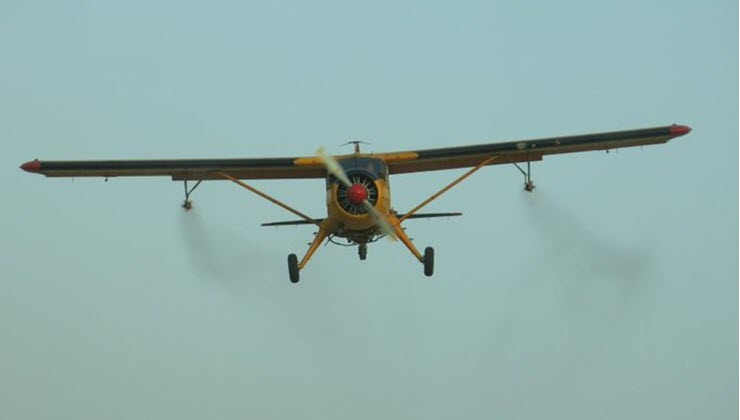The government has acquired an aircraft and chemicals to boost its preparedness amid the invasion of desert locusts.
The migratory pests were first sighted in the country on February 19, after crossing from Kenya through Amudat district in Karamoja sub-region. They later spread to the districts of Amudat, Abim, Kaabong, Nakapiripirit, Agago, Katakwi, Nabilatuk, Kitgum, Karenga, Kumi, Ngora, Soroti and Amuria among others.
The government deployment Local Defence Unit personnel to spray the locusts using hand-held sprays. But State Minister for Animal Husbandry Bright Rwamirama says that aircraft for the aerial spray was cleared yesterday and will be stationed in Moroto district. Another aircraft has been hired for backup.
Rwamirama, who was addressing journalists at the government Media Centre in Kampala said that the government has also procured Fenitrothion, the chemicals recommended to spray locusts, and this is expected to be in the country within three days. According to Rwamirama, all is now set in case of a serious an invasion.
He maintained that although experts have said that this is the worst Desert Locust outbreak in decades for many countries in the Horn of Africa, the locusts in Uganda have not been so harmful. He, however, cautions that they could be laying eggs that will result into hopers that are very dangerous.
To date, the swarms which were reported earlier in Ethiopia, Kenya and Somalia have spread to a total of seven countries, including Djibouti, Eritrea, and Tanzania. As the situation continues to deteriorate, the Food and Agriculture Organisation warns that there’s a growing risk the pests could migrate to more neighbouring countries.
FAO’s Desert Locust Information Service says the situation is extremely alarming and will be further exacerbated by new infestations expected in early April of this year.
A new generation of locusts is expected to hatch this month and with new swarms expected in early April that would coincide with the next season of planting. At that time, the seasonal winds will have shifted to the north, which is likely to allow the newly formed swarms in Kenya to reinvade Ethiopia and Somalia as well, as to migrate to new areas of South Sudan and Sudan.
But Rwamirama says the situation is now under control in Uganda, and that there could be less breeding by the locusts. He also downplayed requests for accountability for monies spent thus far, saying that asking the government to account in the middle of an operation is diversionary.
The Food and Agricultural Organization representative in Uganda Antonio Querido says there is no need for panic as a number of countries are dealing with the same issues. He says the locusts may reach Uganda on a very transitory passage.




